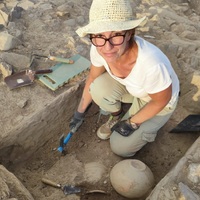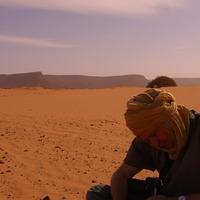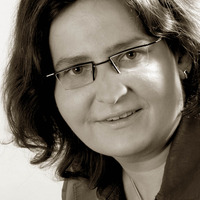Worshop Pace, Prehistoric Adaptations to Cold Environments, 8th-9th january 2019, Nice, 2019
GAUVRIT ROUX E., S. BEYRIES (2019) – Occupation of west-central France between 19 and 17.5 ky cal... more GAUVRIT ROUX E., S. BEYRIES (2019) – Occupation of west-central France between 19 and 17.5 ky cal. BP: which cultural adaptations to the Heinrich 1 cold event? Technological and functional approach of the lithic industry of la Marche (Vienne) and la Garenne (Indre), in A. Henry, M. Vanlandeghem org., Worshop Pace, Prehistoric Adaptations to Cold Environments, 8th-9th january 2019, Nice.
__
Abstract:
Human occupation of west-central France particularly develops between 19 and 17.5 ky cal. BP. This interval corresponds to the Early Middle Magdalenian Period (EMM) and coincides with the first phase of the Heinrich 1 event (H1). Very few sites from earlier (Lower Magdalenian), or later (Late Middle Magdalenian) periods are known in this area. This could reflect population adaptation to changing environments. Indeed, the end of the Last Glacial Maximum is affected by important climatic variations, such as the H1 event. H1 can be divided into three paleoclimatic phases: the first is cold and wet (18.4-17.5 ky cal. BP), the second is dry and cool (17.5-16 ka cal. BP) and the third is warmer (16-14.5 ka cal. BP, Naughton et al., 2016).
The ways in which Magdalenians adapted to their environments can be tracked through analysing their economy (subsistence strategies, production objectives) and techniques (processes, gestures and know-hows). In this poster, we approach these through technological and functional analyses applied to the lithic industry of two sites of west-central France attributed to the EMM: la Marche (Vienne) and la Garenne (Indre).
Our results indicate that in both cases allochthonous good quality flints are exploited to produce standardised blades and bladelets, whose production sequences are segmented spatially and temporally. Economy is mainly based upon animal resources exploitation. Elaborated techniques are observed particularly for activities related to hide processing and hunting.
These elements contrast with what is observed during the Azilian Period (Jacquier, 2018), that is, at the end of the Tardiglacial episode: the increased exploitation of vegetal resources suggest deep transformations of the subsistence strategies after the Magdalenian.











Uploads
Papers by Sylvie Beyries
L’ouvrage présenté ici est plus particulièrement destiné aux étudiants. Il a pour objectif de montrer à quel point la pertinence des résultats obtenus lors d’une expérimentation est dépendante de la qualité des protocoles mis en place.
Après un exposé méthodologique, quatre chapitres - sur le travail des matières osseuses, les projectiles, le céramique et les combustibles - montrent à travers des problématiques variées, majoritairement interdisciplinaires, comment organiser un protocole expérimental, comment le mettre en œuvre et pourquoi il doit être précisément décrit et publié.
__
Abstract:
Human occupation of west-central France particularly develops between 19 and 17.5 ky cal. BP. This interval corresponds to the Early Middle Magdalenian Period (EMM) and coincides with the first phase of the Heinrich 1 event (H1). Very few sites from earlier (Lower Magdalenian), or later (Late Middle Magdalenian) periods are known in this area. This could reflect population adaptation to changing environments. Indeed, the end of the Last Glacial Maximum is affected by important climatic variations, such as the H1 event. H1 can be divided into three paleoclimatic phases: the first is cold and wet (18.4-17.5 ky cal. BP), the second is dry and cool (17.5-16 ka cal. BP) and the third is warmer (16-14.5 ka cal. BP, Naughton et al., 2016).
The ways in which Magdalenians adapted to their environments can be tracked through analysing their economy (subsistence strategies, production objectives) and techniques (processes, gestures and know-hows). In this poster, we approach these through technological and functional analyses applied to the lithic industry of two sites of west-central France attributed to the EMM: la Marche (Vienne) and la Garenne (Indre).
Our results indicate that in both cases allochthonous good quality flints are exploited to produce standardised blades and bladelets, whose production sequences are segmented spatially and temporally. Economy is mainly based upon animal resources exploitation. Elaborated techniques are observed particularly for activities related to hide processing and hunting.
These elements contrast with what is observed during the Azilian Period (Jacquier, 2018), that is, at the end of the Tardiglacial episode: the increased exploitation of vegetal resources suggest deep transformations of the subsistence strategies after the Magdalenian.
In this paper, we will discuss the question of the relationship between environment, hearth functions and fuel from an ethnoarchaeobotanical perspective: according to which criteria are combustible materials selected? Which characteristics influence the behavior of fire and how archaeologically visible can fire-related activities actually be?
Through ethnographic examples acquired in different regions of Siberia and North America, we will show how contextual interacting parameters may influence fuel acquisition patterns, evaluate to what extent the latter vary according to its final destination (type of hearth and activities linked to fire) and, finally, discuss archaeological visibility issues.